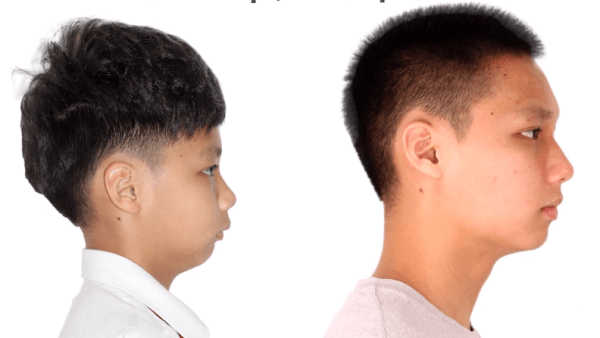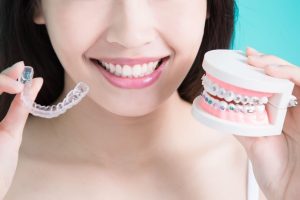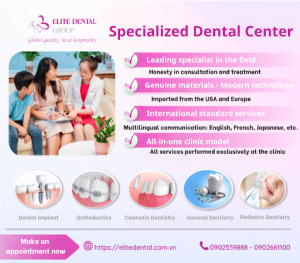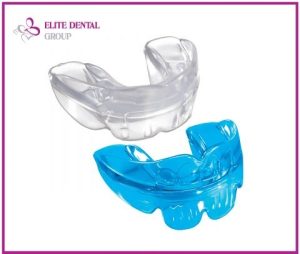Table of content
From an aesthetic or anthropological perspective, a sunken chin is not well appreciated. Therefore, many people look for methods such as braces, plastic surgery, and exercises… to overcome this situation. So what is the most effective method of treating chin sagging today?
1. What is a receding chin?
A receding chin is a condition in which the chin is short, small, or backward due to an underdeveloped lower jaw, while the upper jaw is strongly developed, so a concave chin is often associated with the upper jaw bone.
The concave chin makes the short chin shape lack thickness, looking like there is no chin, thereby making the top of the chin – lips – the top of the nose not on a straight line.
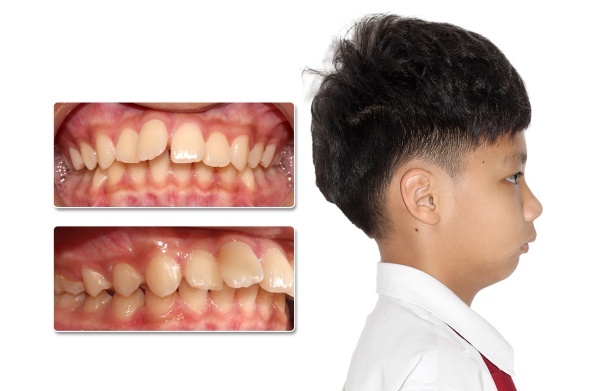
2. Signs of receding chin
Signs to recognize a receding chin include:
- The chin is short, shallow, and small. He looked at his face as if he had no chin.
- From the side view, the chin is noticeably recessed and positioned far behind the forehead.
- Skin sagging and many wrinkles around the mouth.
- The length from the top of the lower lip to the bottom of the chin is too short.
- In some cases, the jaw is protruded and pushed outward.
- There is little or no boundary between the neck and chin.
View more: What Is an Underbite? How Can Braces Correct It?
3. Take a look at the causes of a sunken chin
There are many causes of a receding chin, but there are 2 main causes, including:
3.1 Genetic Factors
A receding chin can be hereditary. Therefore, if there is a family history of receding chin, the likelihood of a baby being born with a recessed chin is quite high.
3.2. Malocclusion
Proper occlusion not only facilitates eating, chewing, and oral hygiene but also ensures that the face remains harmonious and balanced. Due to various reasons (genetics, children with prolonged bottle-feeding or thumb-sucking habits, complications from improperly performed cosmetic procedures, etc.), malocclusion can lead to a receding chin. Exploring orthodontic treatment can help address malocclusion issues.
3.3. Chin injury
Accidents and impacts to the lower jaw area can affect the development of the jawbone, resulting in an underdeveloped chin.
4. Does a receding chin affect health?
In general, a receding chin does not significantly impact health. However, it does have a considerable effect on aesthetics, as it makes the overall facial appearance asymmetrical.
When the chin develops unevenly, and there is long-term malocclusion between the upper and lower jaws, the chewing forces can cause joint pain, misalignment, and temporomandibular joint disorders.
View more: What is Tmd? All things you must know
5. How to treat a receding chin
To address a receding chin, you can apply one of the following ways:
5.1. Braces
Braces are the least invasive method to correct a recessed chin. Depending on your needs and budget, you can choose between traditional metal braces, which are more economical, or modern clear aligners like Invisalign.
Advantage
- Minimally invasive.
- Not only does it help harmonize and balance the face, but it also improves chewing ability and prevents joint pain, misalignment, and temporomandibular joint disorders in the long term.
- Suitable for children.
Elite Dental recommends that the best time to treat a receding chin is during the child’s mixed dentition phase, between 6 and 7 years old. Treatment can take 2 to 3 years and should start while the child is still young, ideally between 6 and 12 years of age, with the earliest starting point being 6 to 7 years old. With 10 years of experience in treating children with braces, adjusting the jawbone during elementary school is considered the most comprehensive and effective method for correcting jawbone deviations, including a receding chin. Starting treatment early and at the right time helps ensure a smoother process and can avoid complex surgical interventions in adulthood.
Disadvantage
- Not suitable for severe and complex cases of a receding chin.
- The treatment process requires a significant amount of time to see results.
To effectively correct a receding chin and prevent the condition from worsening, orthodontic treatment is recommended for children (aged 6-12) during the phase of dental and jawbone development. This helps to restrain the development of the upper jaw while stimulating the lower jaw to grow forward, achieving harmonious occlusion.
Among the options, Elite Dental is a trusted orthodontic center chosen by many parents for their children’s treatment due to:
- A team of specialized dentists with overseas training and over 10 years of experience in pediatric orthodontics in Vietnam.
- Modern and advanced equipment and facilities. High-quality orthodontic appliances with clear origins.
- A diverse database of treatment cases. At Elite Dental, parents will receive detailed explanations and comparisons of similar cases to understand and feel confident about starting their child’s treatment journey.
Contact hotline 0902 661 100 for detailed consultations on orthodontic treatment for children.
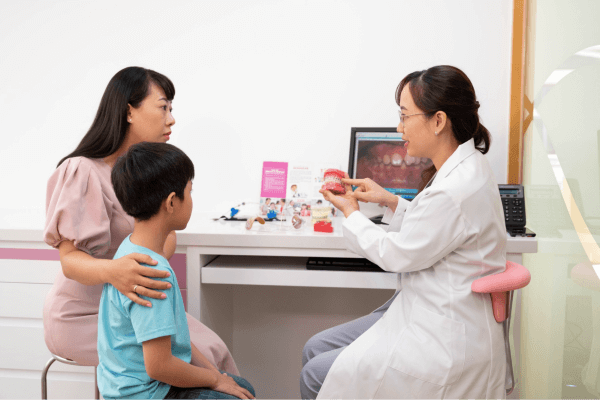
5.2. Chin Augmentation Surgery
Doctors use various types of implants (autologous or synthetic) to help the chin become fuller and achieve the desired standard.
Advantage
- Quick results.
- Suitable for moderate to complex cases of a receding chin.
Disadvantage
- Highly invasive.
- Not suitable for children.
- Higher risk during the treatment process.
- Longer recovery time post-surgery.
5.3. Filler Injection
Filler is a substance commonly used in aesthetics. For a receding chin, filler injections help create a new chin shape with an appropriate projection.
Advantage
- Quick procedure, with results visible within 15 minutes.
- Requires less recovery time compared to chin surgery.
Disadvantage
- Results last only 1-2 years; regular annual touch-ups are needed for permanent effects.
- Suitable only for mild cases of a receding chin.
- Not applicable to children.
- Higher risk of complications.
5.4. Home Exercises for a Receding Chin (Mewing)
Mewing is an exercise to address a recessed chin and help slim the face, popular among many. The exercise is quite simple:
- Close your lips and press your entire tongue against the roof of your mouth (including the body and tip of the tongue).
- Keep the tip of the tongue about 1 cm away from the back of the front teeth; avoid pushing the tongue into the teeth to prevent misalignment.
- Maintain this tongue position for about 20-30 minutes, gradually increasing the time.
Advantage
- Non-invasive, simple, and easy to implement.
Disadvantage
- Low effectiveness, not significant.
- Risk of causing misalignment if done incorrectly.
Overall, orthodontic treatment is the optimal method for correcting a receding chin, being minimally invasive, safe, and naturally altering the chin. The best time to correct a receding chin through orthodontics is during the child’s mixed dentition phase. Therefore, if a receding chin is suspected or detected in a child, parents should have them examined and treated early to ensure a balanced, harmonious facial appearance and maintain oral health.
Related posts: > Can Invisalign correct severely Crowded Teeth? > What Are Crooked Teeth? Can Invisalign correct them? > What Is a Crossbite? Characteristics, Causes, and Treatment Options


